
San Bernardino alle Ossa: Milan’s Incredible Bone Chapel
July 29, 2024
In the vibrant city of Milan, amidst its fashionable streets and historic landmarks, lies a place that intrigues and fascinates visitors from around the globe – San Bernardino alle Ossa.
This unassuming chapel, nestled next to the Church of Santa Maria presso San Satiro, holds a unique allure, earning it the moniker of the Milan Bone Chapel.
Embark on a journey with us as we uncover the mysteries and rich history behind this extraordinary site, from its origins in the medieval era to its modern-day significance as a captivating tourist attraction – something you may want to consider visiting if on a trip to Milan to see the Duomo and other city sites.
Table of Contents
ToggleWhat is San Bernardino alle Ossa?
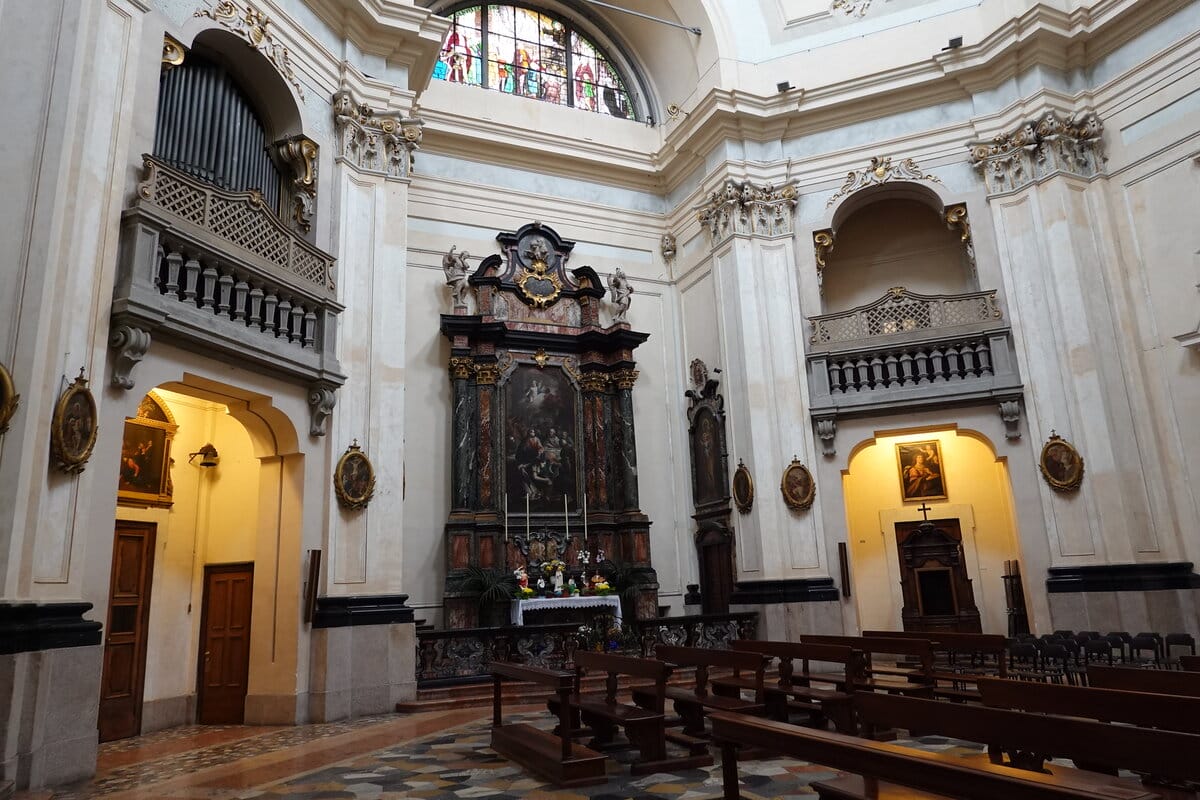
San Bernardino alle Ossa is a small chapel in Milan famous for it’s collection of human bones. Photo credit: Guilhem Vellut
San Bernardino alle Ossa is a small chapel located adjacent to the Church of Santa Maria presso San Satiro in Milan, Italy.
What sets this chapel apart from others is its extraordinary interior adorned with human bones and skulls. This macabre yet mesmerizing decoration has earned it the nickname of the Milan Bone Chapel.
The bones are meticulously arranged in intricate patterns, covering the walls, ceilings, and even the pillars of the chapel. The sight is both haunting and strangely beautiful, evoking a sense of awe and contemplation in those who visit.
Why is it known as the Milan Bone Chapel?
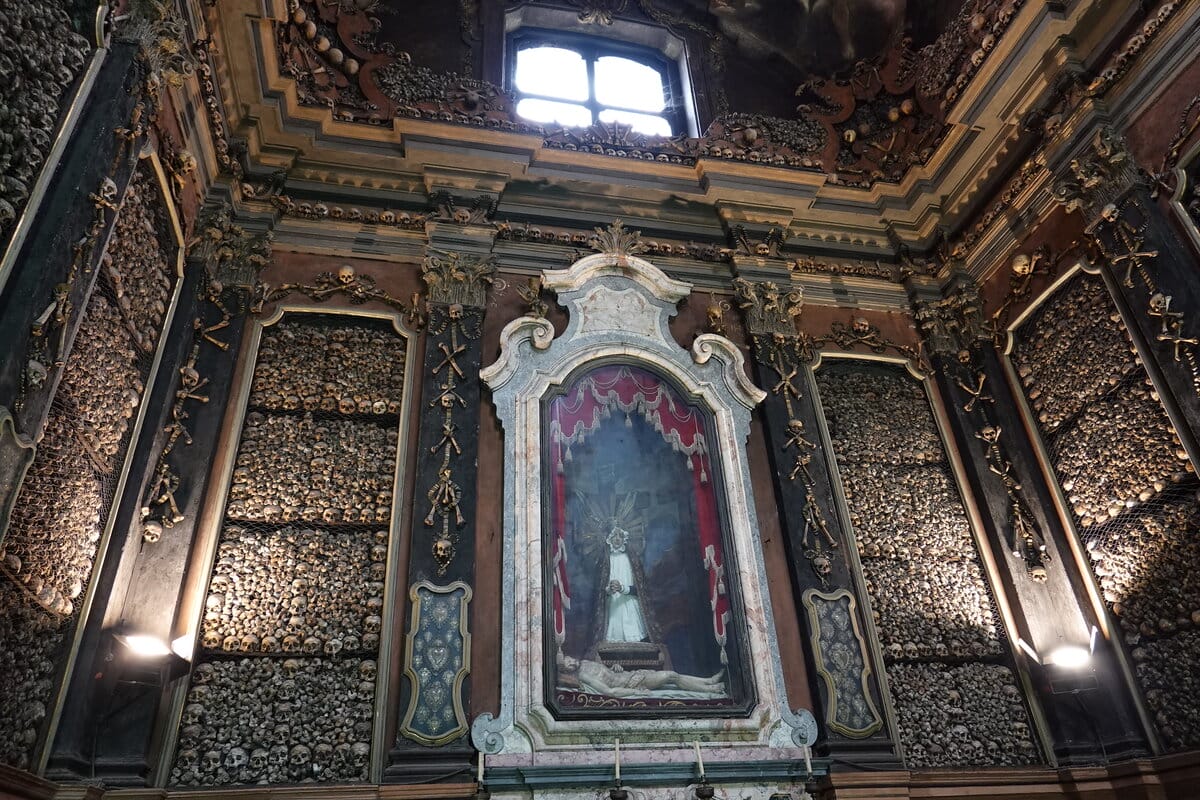
San Bernardino alle Ossa is believed to house more than 3,000 skeletal remains. Photo credit: Guilhem Vellut
The chapel gained its moniker, the Milan Bone Chapel, due to its distinctive feature of housing human skeletal remains as part of its interior design. Indeed, it is thought there are up to 3,000 skeletal remains within the Milan bone chapel.
This practice of decorating religious spaces with bones was not uncommon during the Baroque period, serving as a somber reminder of the fleeting nature of life and the inevitability of death. However, the bone decorations in San Bernardino alle Ossa are particularly elaborate and striking, drawing visitors from far and wide to witness their eerie beauty firsthand.
Why were bones used to decorate churches?
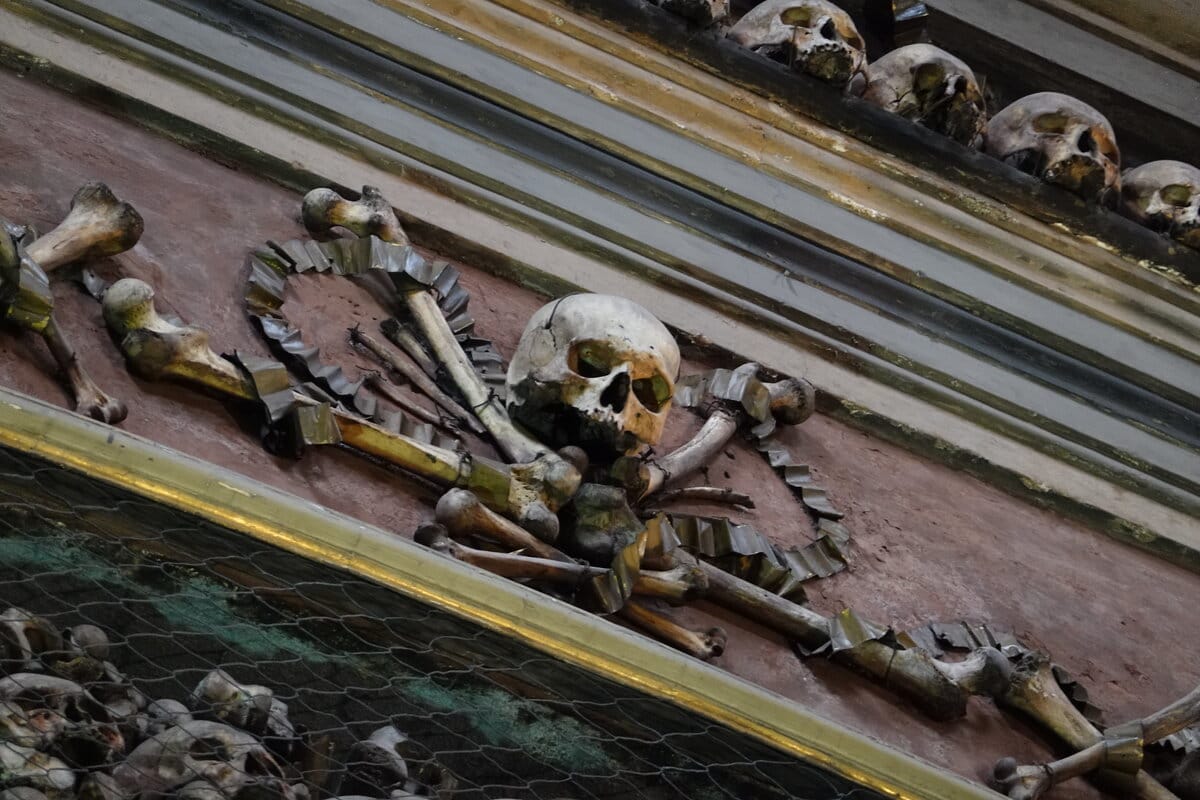
The bones came from a nearby overcrowded cemetary and there are many reasons why they were used to decorate churches. Photo credit: Guilhem Vellut
The bones used in the decoration of San Bernardino alle Ossa were primarily sourced from the nearby cemetery. There are several reasons why bones were used in the adornment of the chapel:
- Overcrowding in Cemeteries: During the medieval period, cemeteries in densely populated cities like Milan often became overcrowded. As a result, there was a need to find alternative solutions for storing human remains. Ossuaries, such as San Bernardino alle Ossa, provided a space-efficient way to house the bones of the deceased.
- Religious Symbolism: The use of human bones in religious architecture served as a potent reminder of the transient nature of life and the inevitability of death. By incorporating bones into the decoration of the chapel, the creators intended to evoke contemplation and reflection on mortality among visitors. It was a way to underscore the spiritual message of humility, mortality, and the afterlife.
- Artistic Expression: In addition to its religious symbolism, the decoration of San Bernardino alle Ossa with human bones was also an expression of artistic creativity. The intricate patterns and designs created using bones showcase the skill and craftsmanship of the architects and artists involved in the renovation of the chapel. It was a unique and innovative way to adorn the interior of the chapel, turning it into a macabre yet mesmerizing work of art.
- Cultural Tradition: The practice of using human bones in religious architecture was not uncommon during the Baroque period, when San Bernardino alle Ossa was renovated. Similar bone-adorned chapels and ossuaries can be found in other parts of Europe, reflecting a broader cultural tradition of memento mori, or “remember death.” This tradition aimed to remind people of the transitory nature of life and the importance of spiritual contemplation.
The history of the San Bernardino alle Ossa
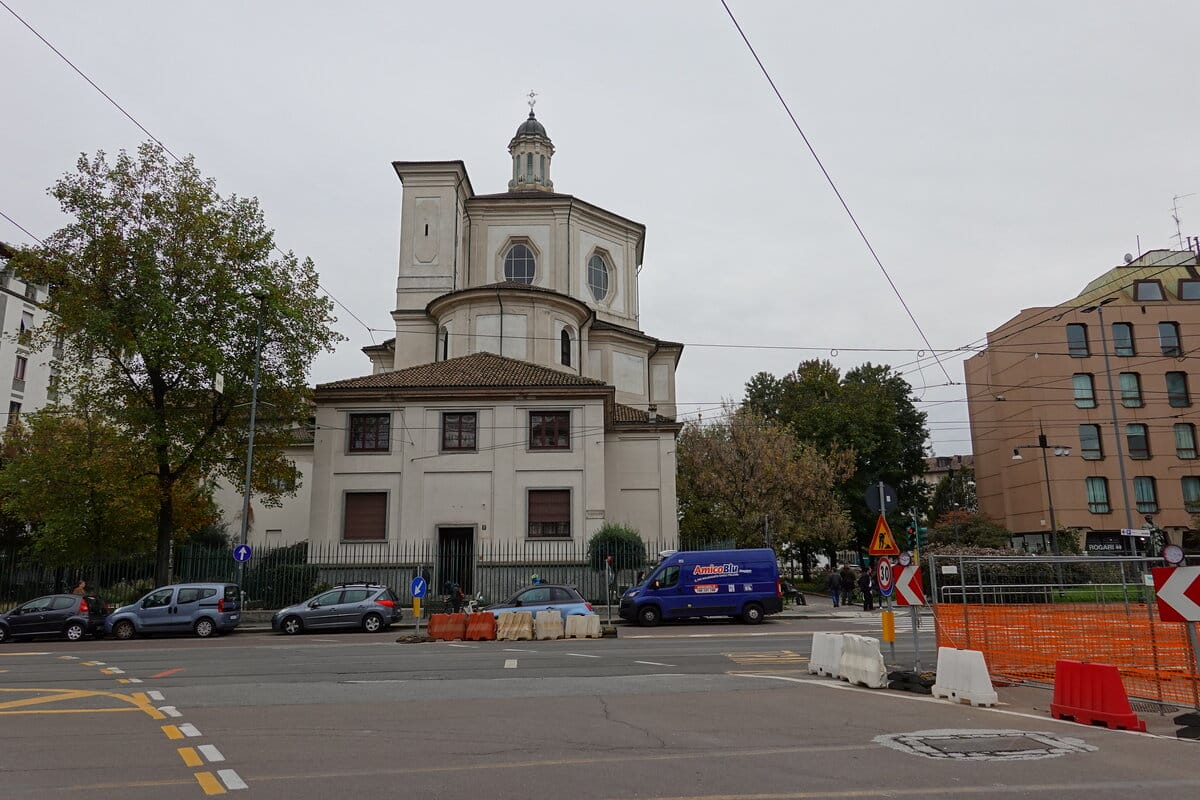
San Bernardino alle Ossa was originally built as an ossuary adjacent to the Church of Santa Maria presso San Satiro. Photo credit: Guilhem Vellut
The history of San Bernardino alle Ossa dates back to the 13th century when it was originally built as an ossuary adjacent to the Church of Santa Maria presso San Satiro.
Ossuaries were common in medieval Europe, serving as repositories for skeletal remains when cemeteries became overcrowded. However, it wasn’t until the 17th century that the chapel was extensively renovated and adorned with the bones that we see today.
The interior decoration of the chapel was the work of a local architect named Giovanni Andrea Biffi, who was commissioned to redesign the space in the Baroque style.
Biffi collaborated with the sculptor Sebastiano Sala to create the elaborate bone decorations that adorn the walls and ceilings of the chapel.
Can you visit the San Bernardino alle Ossa?
Yes, San Bernardino alle Ossa is open to visitors who wish to explore its eerie beauty and learn about its history.
While the chapel itself is relatively small, the experience of witnessing its bone-adorned interior is truly unforgettable. Visitors are encouraged to take their time to appreciate the intricate details of the bone decorations and reflect on the deeper meaning behind them.
Where is it located?
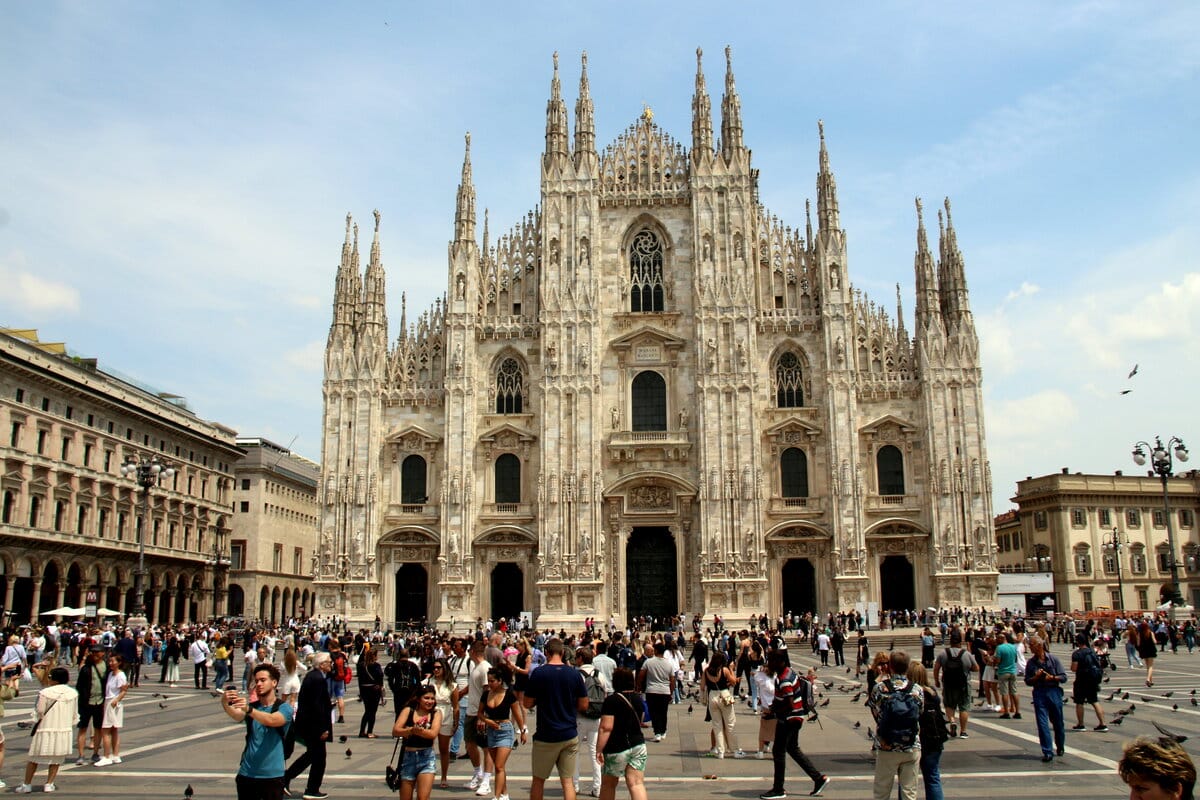
San Bernardino alle Ossa is located near to other famous landmarks in Milan such as the Duomo. Photo credit: yrjö jyske
San Bernardino alle Ossa is conveniently located in the heart of Milan, making it easily accessible to tourists and locals alike. It is situated adjacent to the Church of Santa Maria presso San Satiro, which itself is a remarkable example of Renaissance architecture and features an impressive trompe-l’oeil apse designed by the renowned artist Donato Bramante.
Sites close to San Bernardino alle Ossa
Additionally, the chapel is within walking distance of several other must-see attractions in Milan, including the magnificent Duomo di Milano, one of the largest Gothic cathedrals in the world.
Visitors can also explore the Castello Sforzesco, one of Europe’s most famous citadels and a symbol of Milan’s enduring power.
For those interested in art and culture, the Pinacoteca di Brera houses an extensive collection of Italian masterpieces, including works by renowned artists such as Raphael, Caravaggio, and Titian.
Other activities near Milan’s Bone Chapel
And no visit to Milan would be complete without indulging in the city’s culinary delights, from traditional risotto alla milanese to delectable panettone.
In conclusion, San Bernardino alle Ossa stands as a testament to both the fragility of life and the enduring power of art and architecture. Its bone-adorned interior serves as a poignant reminder of our mortality while also captivating visitors with its eerie beauty.
Whether you’re drawn to its macabre charm or simply curious to explore Milan’s hidden treasures, a visit to the Milan Bone Chapel is sure to leave a lasting impression.
by Gina Mussio
View more by Gina ›Book a Tour

Pristine Sistine - The Chapel at its Best
€89
1794 reviews

Premium Colosseum Tour with Roman Forum Palatine Hill
€56
850 reviews

Pasta-Making Class: Cook, Dine Drink Wine with a Local Chef
€64
121 reviews

Crypts, Bones Catacombs: Underground Tour of Rome
€69
401 reviews

VIP Doge's Palace Secret Passages Tour
€79
18 reviews

Legendary Venice: St. Mark's Basilica, Terrace Doge's Palace
€69
286 reviews









